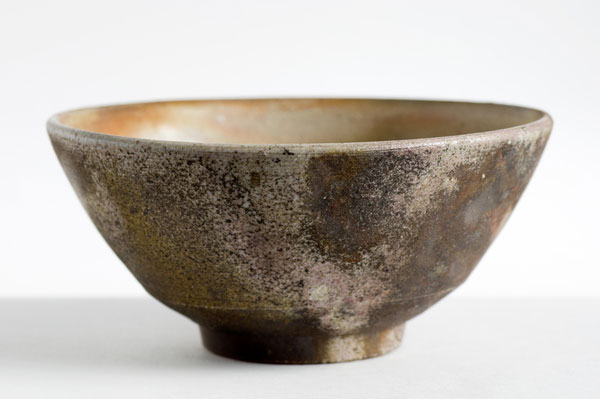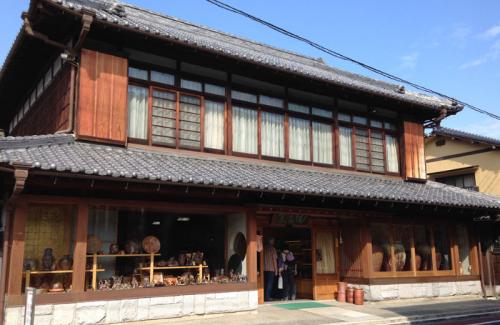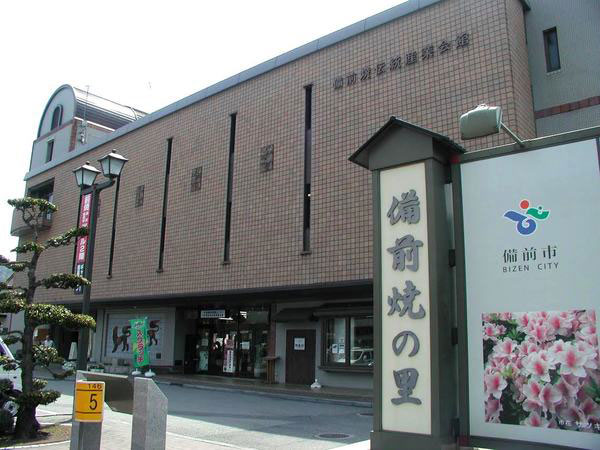
- Ceramic
- Okayama
Bizen ware Bizen yaki
One of Japan’s Six Ancient Kilns
Strong and warm baskets
Description
What is Bizen ware ?
Bizen ware (called Bizen yaki in Japanese) is a form of pottery produced in the area around the city of Bizen in Okayama prefecture. Bizen ware is one of Japan's Six Ancient Kilns. Together with Shigaraki, Tamba, Echizen, Seto and Tokoname, Bizen ware is considered to be one of the most outstanding Japanese kilns with traditions that remain to this day. Bizen ware has a unique manufacturing method as it does not use glaze. Generally, baked pottery is given luster and water-resistance by coating it with glaze, but since Bizen ware does not use glaze, the lack of luster gives a simple, rustic appearance. Glaze is also normally used when applying designs, but since this is not a step involved in the production of Bizen ware, each individual work remains different and unique, which is another charm of Bizen ware. The reason for not adding glaze is that hiyose clay, which is collected around the city of Bizen, is more difficult to spread enamel on than other types of clay. Despite the lack of enamel, great success has been achieved in producing durable pottery with Bizen clay. Artisans, past and present, have considered different ways of adapting to the qualities of this clay, like through baking it inside kilns for a long time without touching, in order to develop Bizen ware to what it is today.
History
Bizen ware is a form of pottery that was developed based on the manufacturing method of Sue pottery, which was a blue-gray pottery introduced from the Korean peninsula during the Kofun period (around 250 to 538 AD). The prevailing theory is that it took form as Bizen ware during the Heian period (794-1185), beginning with the production of daily use bowls and roof tiles. In the Kamakura period (1185–1333), reddish brown was deemed as being one of the characteristic colors of Bizen ware, and during the Muromachi period (1336-1573) these pieces started to use hiyose clay. Also, in the Azuchi-Momoyama period (1573-1600), Bizen ware was said to be favored by Hideyoshi TOYOTOMI, who governed most of Japan at that time, and by Sen no Rikyu, a master of the tea ceremony. Many people adored using Bizen ware during tea ceremonies because its simplicity complemented the spirit of wabi-sabi* found in the ceremony. The spirit of Bizen ware endures today. In 1956, Toyo KANESHIGE was selected as a Living National Treasure for his work as a Bizen ware potter, and many other Living National Treasures have been selected for their work in the same field since then, including Kei FUJIWARA and Toshu YAMAMOTO. Living National Treasure is a title bestowed by the government to groups or individuals who possess skills that are indispensible to produce cultural heritage such as traditional crafts or performance traditions like kabuki theater.
*Wabi-sabi are two key aesthetic concepts of wabi or rustic beauty, both manmade and in nature, and sabi or change making things more valuable.
General Production Process
- 1. Collecting the clay-like soil As Bizen ware does not use glaze, it immediately shows the good and bad quality of the raw material so selecting good soil is one of the most important parts of the whole production process. Soil used in Bizen ware is dug up from around three to five meters underground in fields around Bizen. There are times when collected soil is baked as a test run to determine its good and bad points. The soil cannot be used right away. It must be exposed to wind and rain for one to two years for preparation. After being steadily exposed to wind and rain, the soil is sorted using several steps. First, the large grains are refined with a mortar-like machine known as a fret. Then, when the grains have been refined to a certain extent by the fret, the grains are sorted to become even finer through a process known as elutriation. Elutriation is a process that involves soaking the soil in water and retrieving only the finer grains, which is determined by the speed at which they settle at the bottom.
- 2. Spiral wedging The sorted clay is left to sit for a period of time from a few weeks to a few months, until a suitable level of hardness is obtained by adding water, and is mixed with black soil by roughly kneading with bare feet. The kneaded soil is left to sit again for a period of six months to several years. When the soil is finally ready for use, it is kneaded or wedged again. This type of wedging is referred to as spiral wedging or "chrysanthemum kneading" because the shape of the clay ends up resembling a chrysanthemum flower. The clay is ready for use once all the air bubbles have been wedged out.
- 3. Forming This is the first stage of production after the soil has been prepared. There are various methods of production, including methods that do not use machines (such as forming with coils or forming with boards) and others that use a potter's wheel, but the forming methods are basically the same as those of other types of pottery.
- 4. Using a spatula After forming, the pieces are laid on the potter's wheel and patterned using a spatula.
- 5. Loading pots into the kiln Bizen ware cannot be baked inside the kiln immediately, even if their shapes have been formed. The key is to leave them alone and let them dry naturally. If cracks occur at the stage of natural drying, they must be returned to soil. Once they have been dried thoroughly, the kiln is ready to be loaded. The degree of baking varies depending on the position inside the kiln, so it is necessary to make thorough calculations before loading the kiln.
- 6. First firing ceremony The first firing of Bizen ware is carried out on a lucky day to ensure that the pieces will be baked well. A ritual prayer is given to the gods at the first firing ceremony.
- 7.Firing Although it may seem like it only involves baking in a kiln, there are several separate processes involved. First, kuyushi is carried out during the first two days. Kuyushi refers to the process of throwing kindling onto the fire using only the fire inlets in two locations at the front of the kiln. This helps increasing the strength of the finished piece. 'Scorching' begins on the third day. This is when the temperature of the kiln is raised gradually, by around 3 to 5℃ every hour, to make the pieces difficult to break. Naka-daki is carried out once the temperature exceeds 400℃. In naka-daki, the temperature is raised by around 7 to 10℃ per hour, accelerating the pace of temperature increase. Once it has passed 800℃, the temperature is raised 10 to 15℃ per hour, and finally the firing process continues while keeping the temperature at around 1150℃ to 1300℃. This whole process takes around 1 to 2 weeks.
- 8. Removing the pots from the kiln Once the firing is complete, all of the furnace openings are immediately closed without opening the kiln, after which the inside of the kiln slowly cools. This is done slowly because the pottery could crack if the kiln cools too fast.
- 9. Finishing touches
Bizen ware pieces that have been carefully removed from the kiln are hand-polished and inspected by the artisans.
Leading Ateliers
Konishi-toko Bizen ware atelier

We create traditional Bizen ware by respecting the traditions such as using Japanese red pine as firewood.
Our atelier was created by Toichiro KONISHI who gave his name to Konishi toko. One of his greatest accomplishments was to discover a way to create natural landscape colors artificially. This type of Bizen ware is called zangiri.
You can find superb handicraft and delicate Bizen ware molding techniques through the beautiful vivid colors of zangiri, tea ceremony utensils or zodiac signs ornaments.
The grandson of our founder, Tozo KONISHI, is now in charge of supervising our atelier's works while working as an artist. He was designed as an Intangible Cultural Property Holder of the city of Bizen.
-
ClosedJanuary 1 only
-
DirectorEiko KONISHI
-
Business Hours8am to 5pm
-
Address
-
Website
-
Tel.+81-869-64-2210
Bishu-gama atelier

Bishu-gama atelier was founded in 1974 after an idea from the Living National Treasure Toshu YAMAMOTO by his eldest son, Yuichi, and his wife.
-
ClosedDecember 30 to January 5
-
DirectorAtsuko YAMAMOTO
-
Business Hours9am to 5pm
-
Address
-
Website
-
Tel.+81-869-64-1160
Where to Buy & More Information
Bizen ware Dento Sangyo Kaikan
 Photo:Bizenyaki Dento Sangyo Kaikan
Photo:Bizenyaki Dento Sangyo Kaikan
-
Address
-
Tel.+81-869-64-1001
-
ClosedTuesdays (open if Tuesday is holiday and closed the next day), December 29 to January 3
-
Business Hours9:30am to 5:30pm
-
Website
See more Ceramic
- Imari ware/Arita ware
- Hasami ware
- Kutani ware
- Mashiko ware
- Shigaraki ware
- Bizen ware
- Hagi ware
- Koishiwara ware
- Mino ware
- Tobe ware
- Tokoname ware
- Karatsu ware
- Kasama ware
- Satsuma ware
- Iga ware
- Mikawachi ware
- Agano ware
- Otani ware
- Obori-soma ware
- Tsuboya ware
- Aizu-hongo ware
- Shodai ware
- Echizen ware
- Akazu ware
- Tamba-tachikui ware
- Yokkaichi-banko ware
- Izushi ware
- Kyo ware/Kiyomizu ware
- Iwami ware
- Amakusa ceramics
- Seto-sometsuke ware
- Sanshu Onigawara Crafts































































































































































































































































































